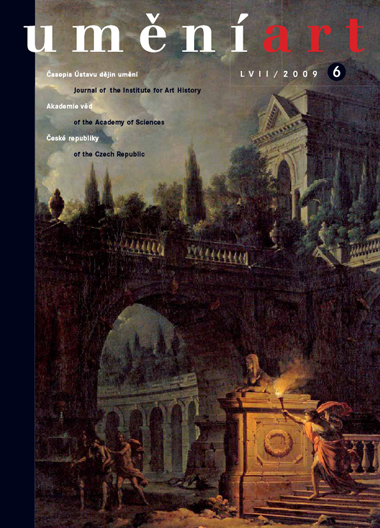Marcel Pencák
Intimita výstavy Navrátilovy
In 1909 a groundbreaking exhibition of the work of Josef Navrátil (1798-1865) was held at the Rudolfinum in Prague. At a time when New Art was on the rise this artist was already forgotten, but the modernists had a hand in elevating his significance. Karel B. Mádl wrote an informative article on the subject in 1898 and eleven years later a successful exhibition of Navrátil's work was organised by Miloš Jiránek, an experienced organiser of modern French art shows. The Rudolfinum exhibition evolved out of the idea of setting Navrátil's work in the parlour interiors of the 1850s. The painter's art works were usually created for the purpose of decorating the flats of well-off townsmen, who commissioned them for their 'charm' and their slight sentimentality. Jiránek's idea was executed by the just twenty-one-year-old Vladimír Fultner from Jan Kotěra's studio. The basis of his architectural plan was to hang Navrátil's paintings and drawings among Jiránek's recommended Empire and Biedermeier furniture. The exhibition received an expectedly positive response thanks to its viewer-friendly design and unorthodox treatment of the content. 'Intimate' was the term most frequently used in the reviews of the exhibition - that is how many of the reviews described the impression they took away from Navrátil's works and the atmosphere of the exhibition space. The exhibition attempted to uncover the unique signs of Navrátil's artistic potential, which in his day went beyond the bounds of the then prevailing tedious and routine styles of art and augured the painting style of Jaroslav Čermák and Josef Mánes. Thus, the conventional image of Josef Navrátil as someone who had created only palace decorations, numerous still lifes, and 'sentimental gauche landscapes' began to fade. The exhibition's organisers gave prominent place to his oil paintings, figural paintings, and colouristic sketches and studies for paintings, which he infused with greater artistic boldness and ingenuity.
Full-text in the Digital Library of the Czech Academy of Sciences:
https://kramerius.lib.cas.cz/uuid/uuid:67cb3472-6e20-6aa1-4b78-f9051b00f7f5
< back

